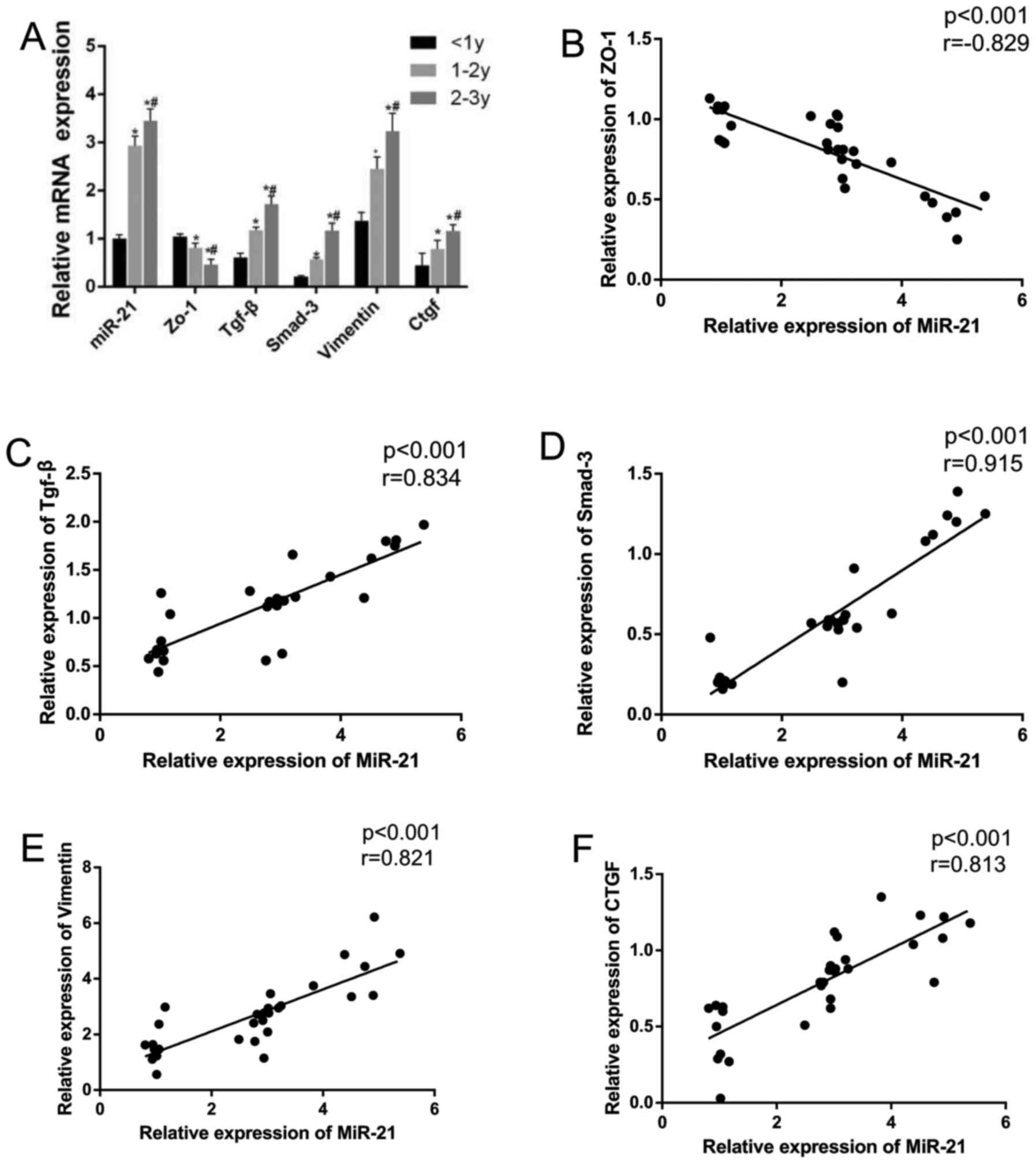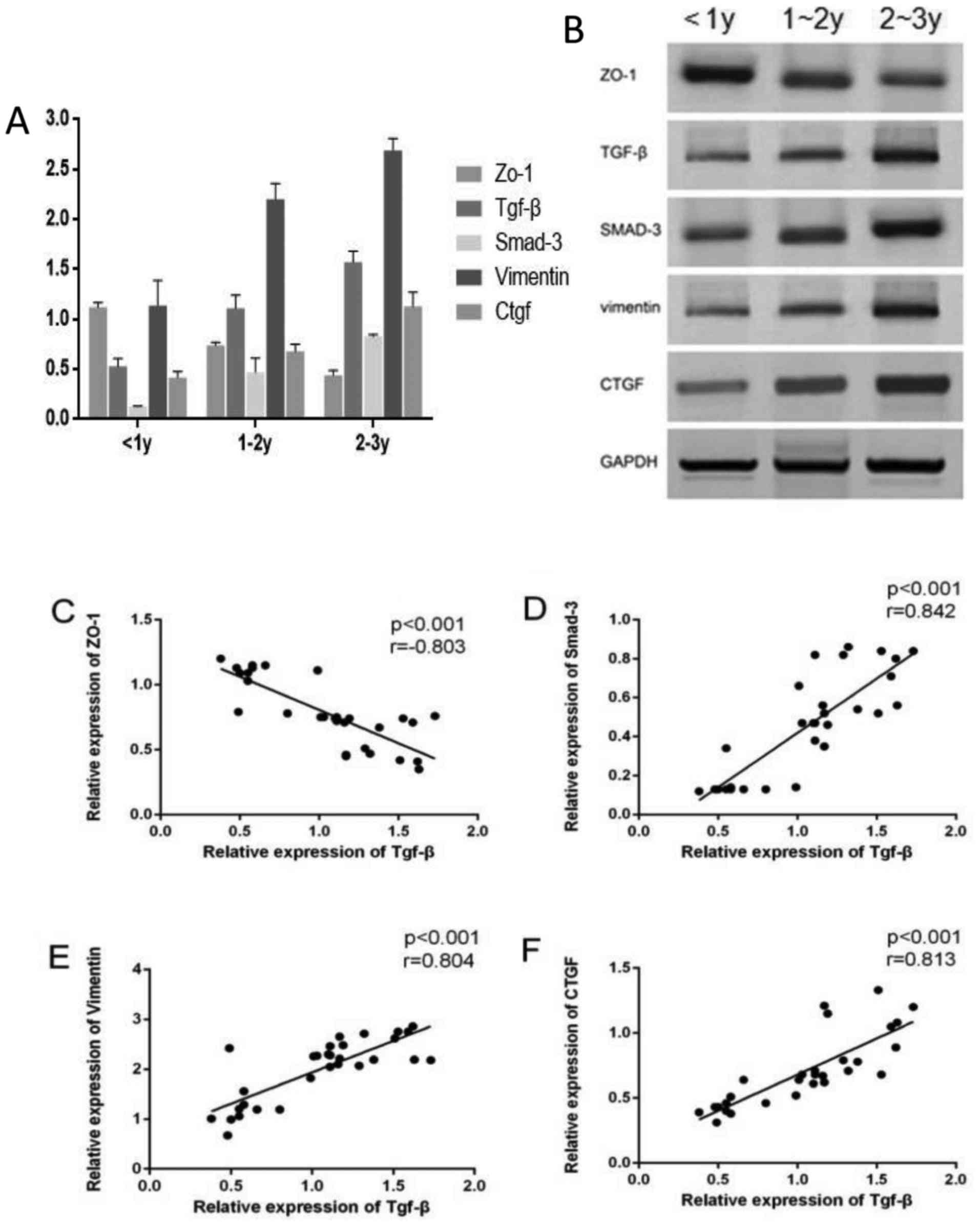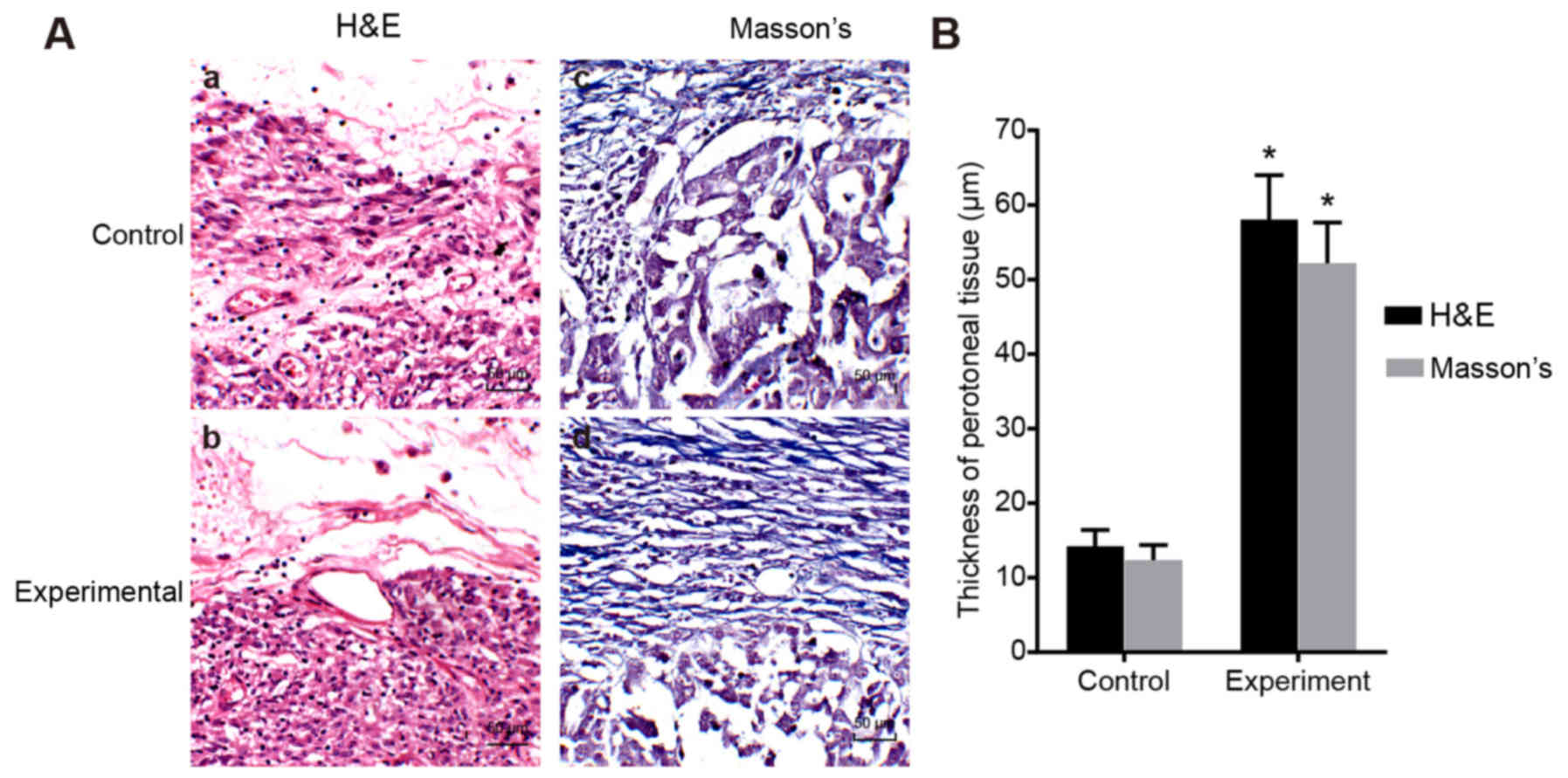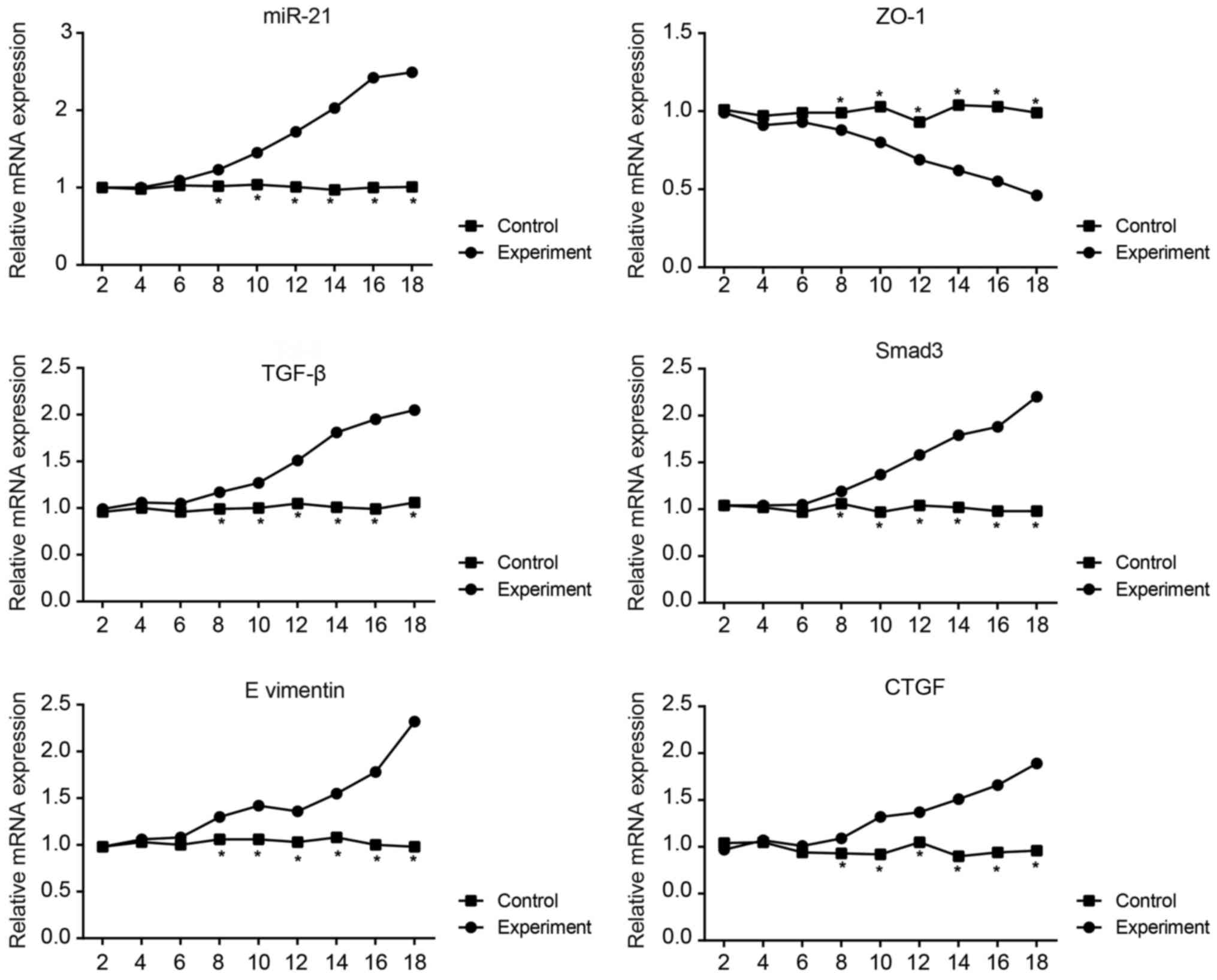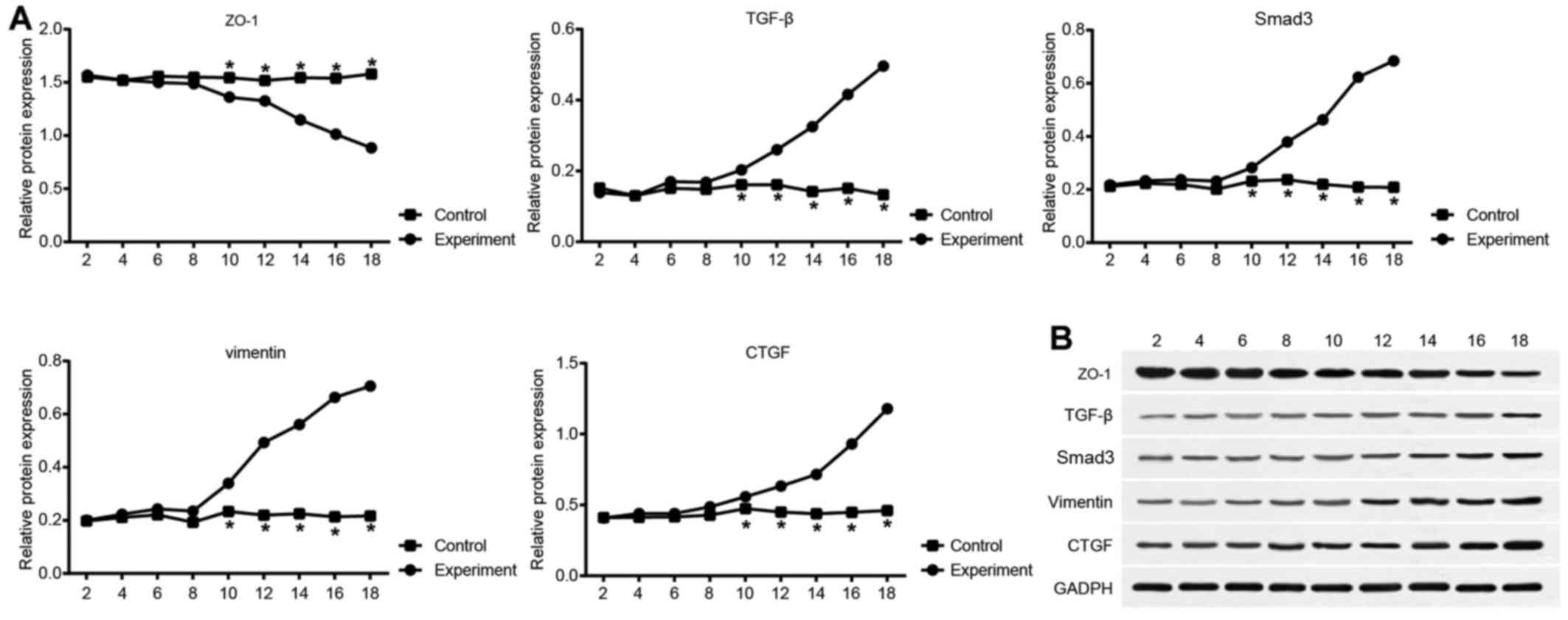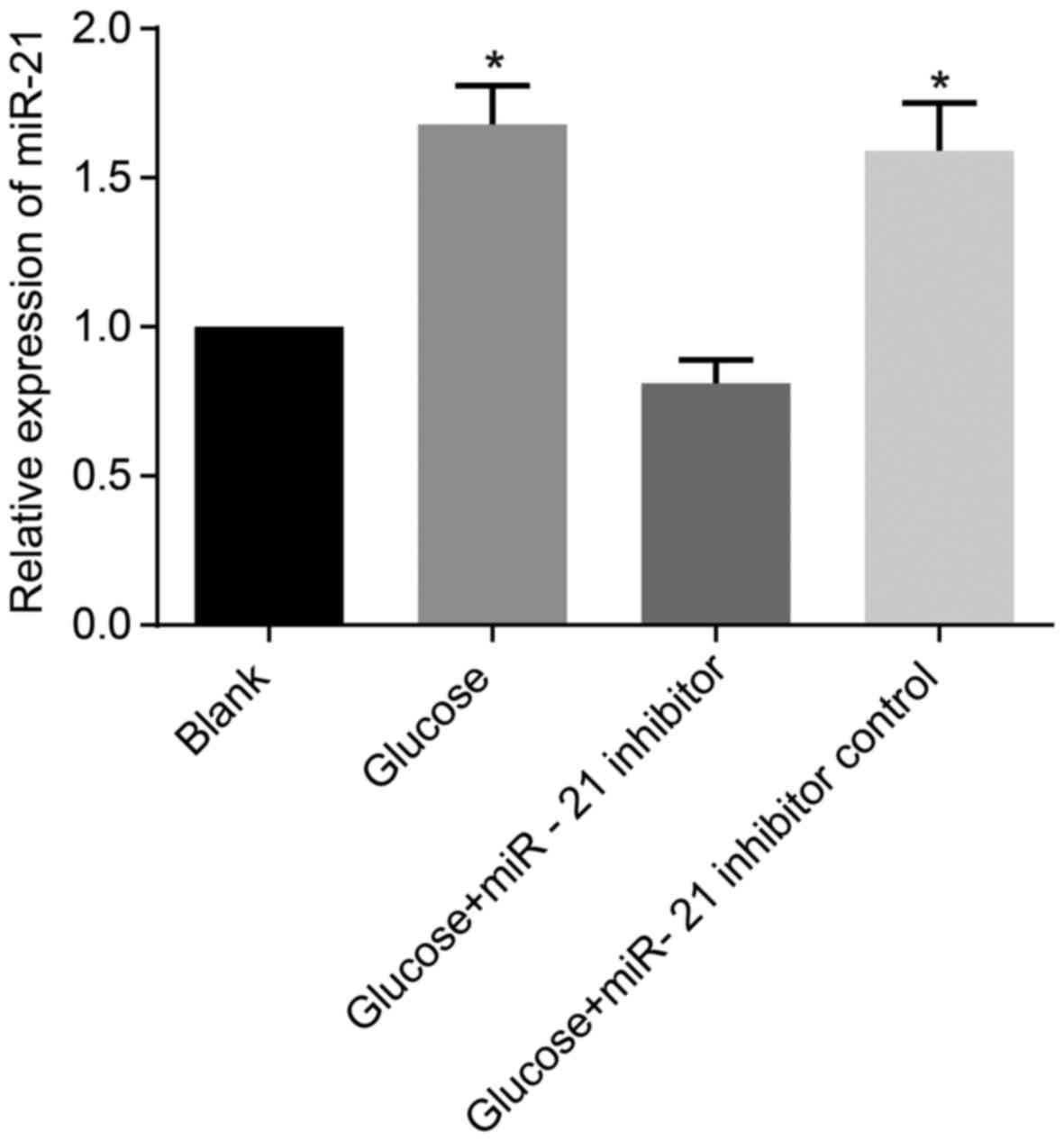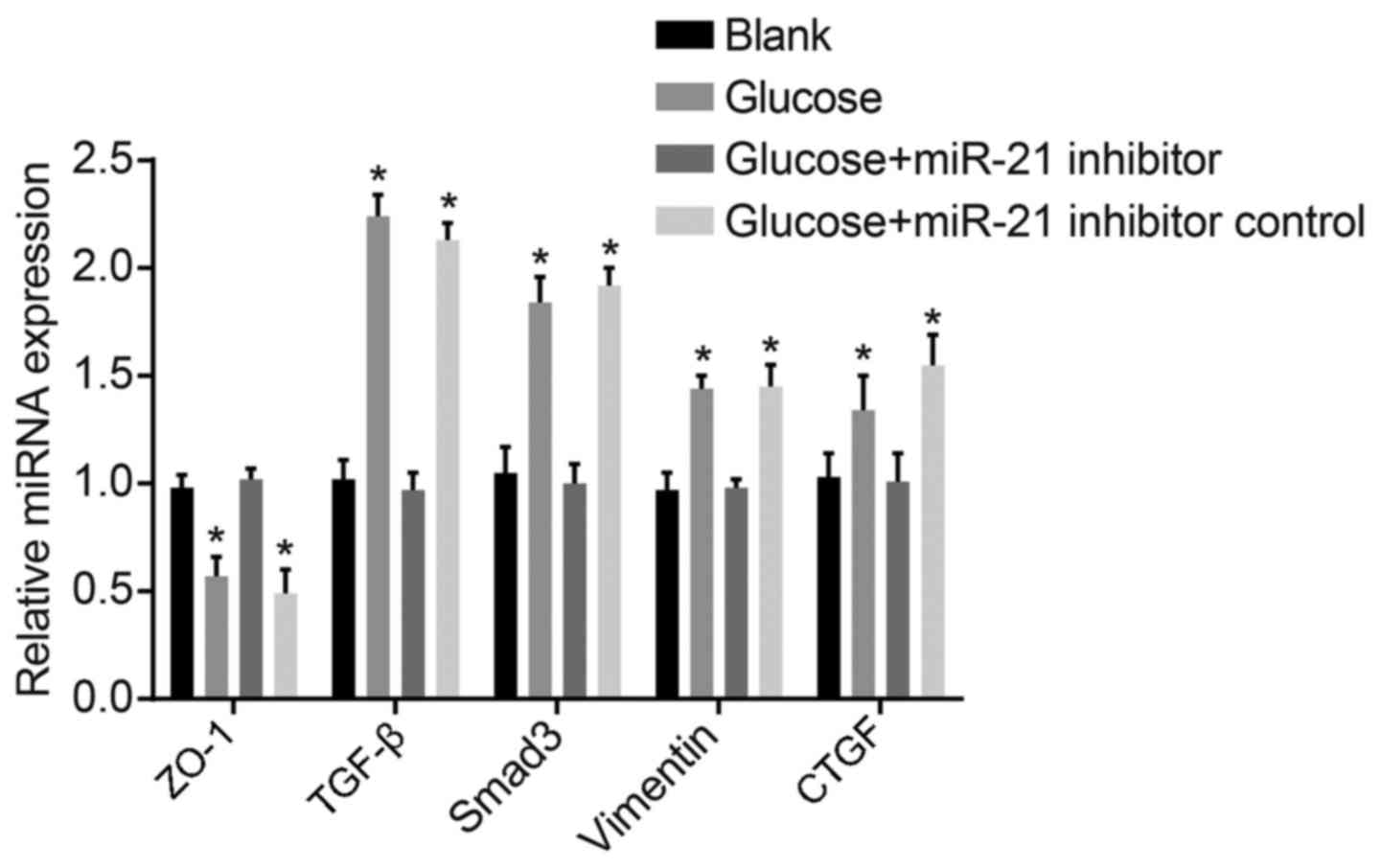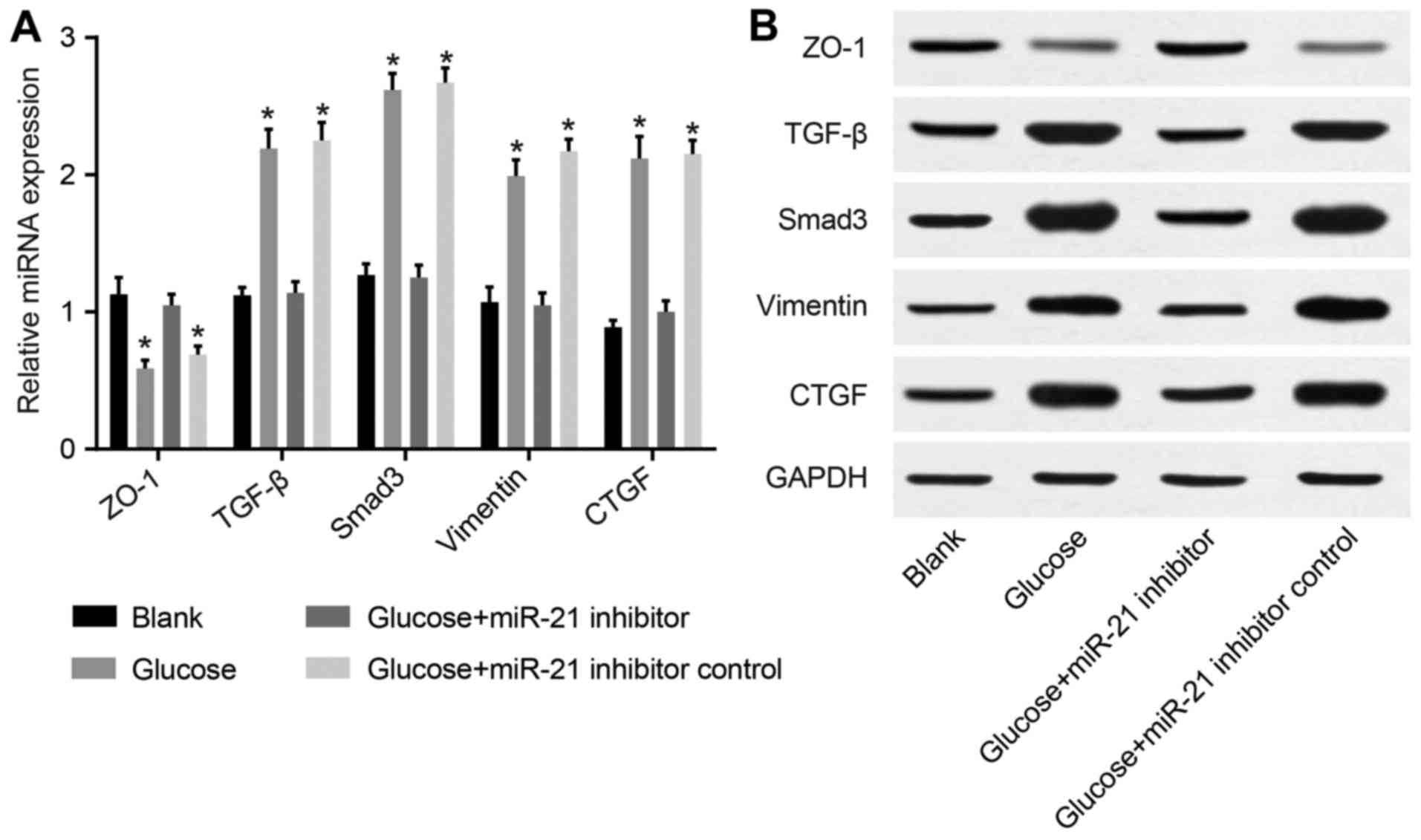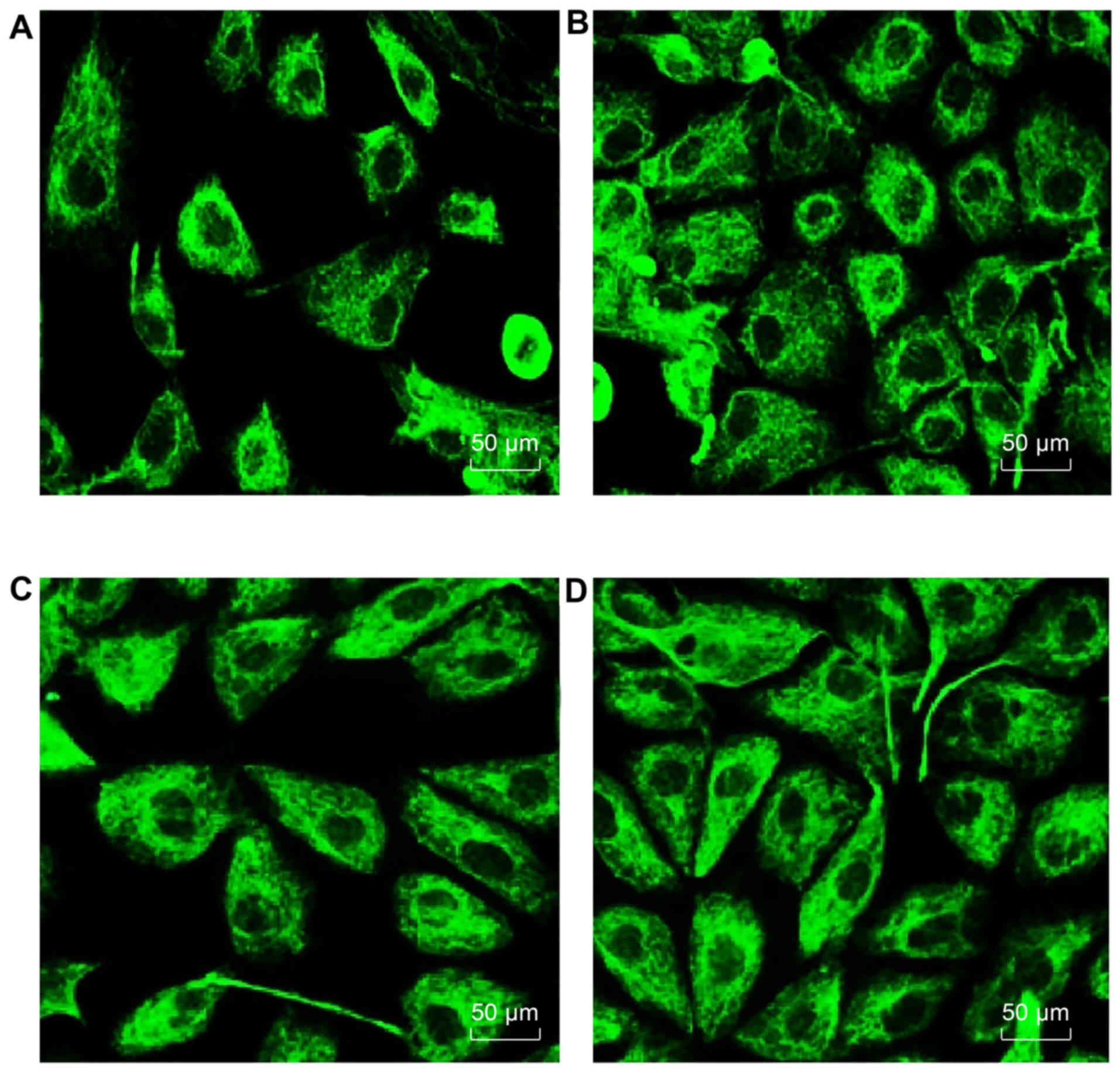|
1
|
Chou CY, Wang SM, Liang CC, Chang CT, Liu
JH, Wang IK, Hsiao LC, Muo CH, Chung CJ and Huang CC: Peritoneal
Dialysis is associated with a netter survival in cirrhotic patients
with chronic kidney disease. Medicine (Baltimore). 95:e24652016.
View Article : Google Scholar
|
|
2
|
Bowen T: A role for fibrocytes in
peritoneal fibrosis? Perit Dial Int. 32:4–6. 2012. View Article : Google Scholar : PubMed/NCBI
|
|
3
|
Stavenuiter AW, Farhat K, Vila Cuenca M,
Schilte MN, Keuning ED, Paauw NJ, ter Wee PM, Beelen RH and
Vervloet MG: Protective effects of paricalcitol on peritoneal
remodeling during peritoneal dialysis. BioMed Res Int.
2015:4685742015. View Article : Google Scholar : PubMed/NCBI
|
|
4
|
de Lima SM, Otoni A, Sabino AP, Dusse LM,
Gomes KB, Pinto SW, Marinho MA and Rios DR: Inflammation,
neoangiogenesis and fibrosis in peritoneal dialysis. Clin Chim
Acta. 421:46–50. 2013. View Article : Google Scholar : PubMed/NCBI
|
|
5
|
Kawanishi K, Honda K, Tsukada M, Oda H and
Nitta K: Neutral solution low in glucose degradation products is
associated with less peritoneal fibrosis and vascular sclerosis in
patients receiving peritoneal dialysis. Perit Dial Int. 33:242–251.
2013. View Article : Google Scholar :
|
|
6
|
Hung KY, Wu KD and Tsai TJ: In vitro study
of peritoneal fibrosis. Perit Dial Int. 27(Suppl 2): S72–S75.
2007.PubMed/NCBI
|
|
7
|
Duan WJ, Yu X, Huang XR, Yu JW and Lan HY:
Opposing roles for Smad2 and Smad3 in peritoneal fibrosis in vivo
and in vitro. Am J Pathol. 184:2275–2284. 2014. View Article : Google Scholar : PubMed/NCBI
|
|
8
|
Li Z, Zhang L, He W, Zhu C, Yang J and
Sheng M: Astragalus membranaceus inhibits peritoneal fibrosis via
monocyte chemoattractant protein (MCP)-1 and the transforming
growth factor-β1 (TGF-β1) pathway in rats submitted to peritoneal
dialysis. Int J Mol Sci. 15:12959–12971. 2014. View Article : Google Scholar : PubMed/NCBI
|
|
9
|
Ghosh AK, Nagpal V, Covington JW, Michaels
MA and Vaughan DE: Molecular basis of cardiac
endothelial-to-mesenchymal transition (EndMT): Differential
expression of microRNAs during EndMT. Cell Signal. 24:1031–1036.
2012. View Article : Google Scholar : PubMed/NCBI
|
|
10
|
Lan HY: Diverse roles of TGF-β/Smads in
renal fibrosis and inflammation. Int J Biol Sci. 7:1056–1067. 2011.
View Article : Google Scholar :
|
|
11
|
Lan HY: Smads as therapeutic targets for
chronic kidney disease. Kidney Res Clin Pract. 31:4–11. 2012.
View Article : Google Scholar : PubMed/NCBI
|
|
12
|
van Bommel EF, van Spengler J, van der
Hoven B and Kramer P: Retroperitoneal fibrosis: report of 12 cases
and a review of the literature. Neth J Med. 39:338–345.
1991.PubMed/NCBI
|
|
13
|
Dou XR, Yu XQ, Li XY, Chen WF, Hao WK, Jia
ZJ, Peng WX, Wang X, Yin PD, Wang WJ and Zheng ZH: The role of
TGF-beta1/Smads in the development of peritoneal fibrosis induced
by high glucose peritoneal dialysate and LPS. Zhonghua Yi Xue Za
Zhi. 85:2613–2618. 2005.PubMed/NCBI
|
|
14
|
Lü ZD, Xu HM, Wang HB, Kong B, Li JG, Li
FN and Song YM: Effect of peritoneal fibrosis induced by
transforming growth factor-beta 1 on the adhesion of gastric cancer
cell. Zhonghua Yi Xue Za Zhi. 92:1698–1701. 2012.In Chinese.
|
|
15
|
Vassiliadis E, Oliveira CP,
Alvares-da-Silva MR, Zhang C, Carrilho FJ, Stefano JT, Rabelo F,
Pereira L, Kappel CR, Henriksen K, et al: Circulating levels of
citrullinated and MMP-degraded vimentin (VICM) in liver fibrosis
related pathology. Am J Transl Res. 4:403–414. 2012.PubMed/NCBI
|
|
16
|
Lan HY and Chung AC: TGF-β/Smad signaling
in kidney disease. Semin Nephrol. 32:236–243. 2012. View Article : Google Scholar : PubMed/NCBI
|
|
17
|
Zhong X, Chung AC, Chen HY, Meng XM and
Lan HY: Smad3-mediated upregulation of miR-21 promotes renal
fibrosis. J Am Soc Nephrol. 22:1668–1681. 2011. View Article : Google Scholar : PubMed/NCBI
|
|
18
|
Meng XM, Huang XR, Xiao J, Chung AC, Qin
W, Chen HY and Lan HY: Disruption of Smad4 impairs TGF-β/Smad3 and
Smad7 transcriptional regulation during renal inflammation and
fibrosis in vivo and in vitro. Kidney Int. 81:266–279. 2012.
View Article : Google Scholar
|
|
19
|
Kok HM, Falke LL, Goldschmeding R and
Nguyen TQ: Targeting CTGF, EGF and PDGF pathways to prevent
progression of kidney disease. Nat Rev Nephrol. 10:700–711. 2014.
View Article : Google Scholar : PubMed/NCBI
|
|
20
|
Thum T, Gross C, Fiedler J, Fischer T,
Kissler S, Bussen M, Galuppo P, Just S, Rottbauer W, Frantz S, et
al: MicroRNA-21 contributes to myocardial disease by stimulating
MAP kinase signalling in fibroblasts. Nature. 456:980–984. 2008.
View Article : Google Scholar : PubMed/NCBI
|
|
21
|
Lee UE and Friedman SL: Mechanisms of
hepatic fibrogenesis. Best Pract Res Clin Gastroenterol.
25:195–206. 2011. View Article : Google Scholar : PubMed/NCBI
|
|
22
|
Mormone E, George J and Nieto N: Molecular
pathogenesis of hepatic fibrosis and current therapeutic
approaches. Chem Biol Interact. 193:225–231. 2011. View Article : Google Scholar : PubMed/NCBI
|
|
23
|
Liang H, Zhang C, Ban T, Liu Y, Mei L,
Piao X, Zhao D, Lu Y, Chu W and Yang B: A novel reciprocal loop
between microRNA-21 and TGFβRIII is involved in cardiac fibrosis.
Int J Biochem Cell Biol. 44:2152–2160. 2012. View Article : Google Scholar : PubMed/NCBI
|
|
24
|
Wang T, Zhang L, Shi C, Sun H, Wang J, Li
R, Zou Z, Ran X and Su Y: TGF-β-induced miR-21 negatively regulates
the antiproliferative activity but has no effect on EMT of TGF-β in
HaCaT cells. Int J Biochem Cell Biol. 44:366–376. 2012. View Article : Google Scholar
|
|
25
|
Zhu H, Luo H, Li Y, Zhou Y, Jiang Y, Chai
J, Xiao X, You Y and Zuo X: MicroRNA-21 in scleroderma fibrosis and
its function in TGF-β-regulated fibrosis-related genes expression.
J Clin Immunol. 33:1100–1109. 2013. View Article : Google Scholar : PubMed/NCBI
|
|
26
|
Yao Q, Cao S, Li C, Mengesha A, Kong B and
Wei M: Micro-RNA-21 regulates TGF-β-induced myofibroblast
differentiation by targeting PDCD4 in tumor-stroma interaction. Int
J Cancer. 128:1783–1792. 2011. View Article : Google Scholar
|
|
27
|
Butz H, Rácz K, Hunyady L and Patócs A:
Crosstalk between TGF-β signaling and the microRNA machinery.
Trends Pharmacol Sci. 33:382–393. 2012. View Article : Google Scholar : PubMed/NCBI
|
|
28
|
Fu RQ, Hu DP, Hu YB, Hong L, Sun QF and
Ding JG: miR-21 promotes α-SMA and collagen I expression in hepatic
stellate cells via the Smad7 signaling pathway. Mol Med Rep.
16:4327–4333. 2017.PubMed/NCBI
|















